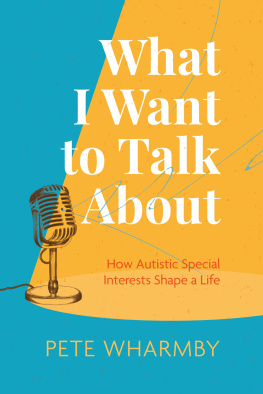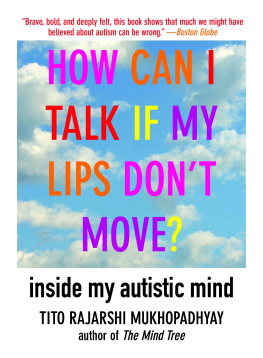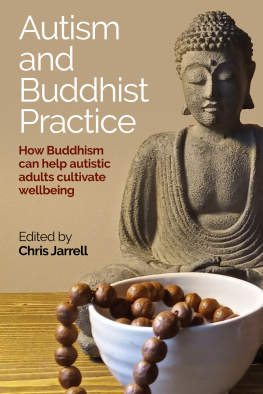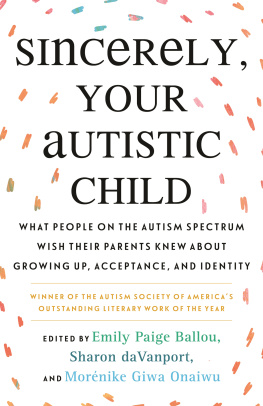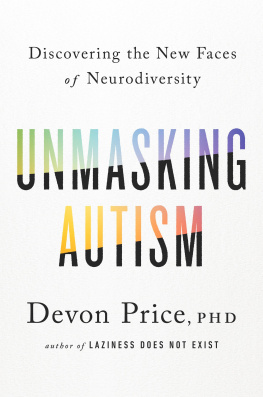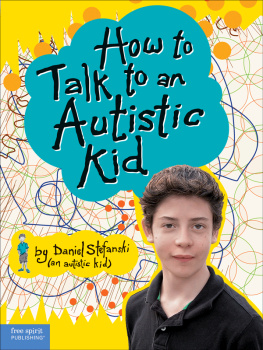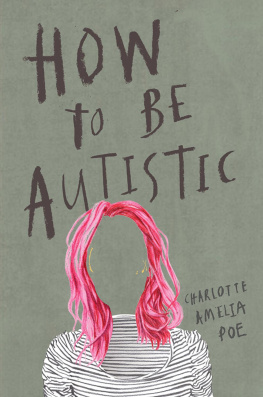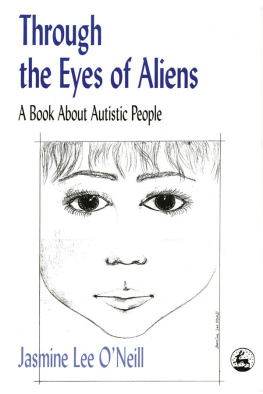Contents
Page list

of related interest
Bittersweet on the Autism Spectrum
Edited by Luke Beardon, PhD and Dean Worton
ISBN 978 1 78592 207 7
eISBN 978 1 78450 485 4
An Adult with an Autism Diagnosis
A Guide for the Newly Diagnosed
Gillan Drew
ISBN 978 1 78592 246 6
eISBN 978 1 78450 530 1
Living in Two Worlds
On Being a Social Chameleon with Aspergers
Dylan Emmons
ISBN 978 1 78592 706 5
eISBN 978 1 78450 263 8
Sex, Drugs and Aspergers Syndrome (ASD)
A User Guide to Adulthood
Luke Jackson
Foreword by Tony Attwood
ISBN 978 1 84905 645 8
eISBN 978 1 78450 139 6
Pretending to be Normal
Living with Aspergers Syndrome (Autism Spectrum Disorder) Expanded Edition
Liane Holliday Willey
ISBN 978 1 84905 755 4
eISBN 978 0 85700 987 6
What I Want to Talk About
HOW AUTISTIC SPECIAL
INTERESTS SHAPE A LIFE
Pete Wharmby

First published in Great Britain in 2023 by Jessica Kingsley Publishers
An imprint of Hodder & Stoughton Ltd
An Hachette Company
Copyright Pete Wharmby 2023
The right of Pete Wharmby to be identified as the Author of the Work has been asserted by him in accordance with the Copyright, Designs and Patents Act 1988.
Front cover image source: Kara McHale.
All rights reserved. No part of this publication may be reproduced, stored in a retrieval system, or transmitted, in any form or by any means without the prior written permission of the publisher, nor be otherwise circulated in any form of binding or cover other than that in which it is published and without a similar condition being imposed on the subsequent purchaser.
A CIP catalogue record for this title is available from the British Library and the Library of Congress
ISBN 978 1 78775 827 8
eISBN 978 1 78775 828 5
Jessica Kingsley Publishers policy is to use papers that are natural, renewable and recyclable products and made from wood grown in sustainable forests. The logging and manufacturing processes are expected to conform to the environmental regulations of the country of origin.
Jessica Kingsley Publishers
Carmelite House
50 Victoria Embankment
London EC4Y 0DZ
www.jkp.com
For my grandad,
who always listened.
Contents
Hyperfixations and monotropism
This book is not a memoir. There are two significant reasons for this. One is that my life to date does not warrant a memoir I have experienced far too few exciting things in my almost 40 years to fill the pages of a traditional autobiography. The other is that I hope many exciting things may still be to come, in which case there is a chance I will be writing my memoir, let us just say some other time. No; this is no stately jaunt carefully picking through the years since my birth to the present day. It is not a character study of how I went from being a tiny, slightly grumpy baby to the huge, slightly grumpy man I am today; nor will it give insight into the challenges of my life, the paths not taken, the successes, the boredom.
Instead, this is a book that is about probably the most important things to me the things that, as far as Im concerned, make me me , and also make me autistic, and also make me interesting, at least some of the time. This is a book about the things that keep me going in life; the things that focus my energy, that keep me afloat, that calm me in times of stress, that thrill me in times of peace; the things that grasp and hold my attention like a dangled length of string occupies a kitten; it is a book about my interests.
Special Interests, we tend to call them. All autistic people have them to some extent. If you are reading this as an autistic person, you will know precisely what I mean. If you are not, then hold up lets take a moment to understand them. Special Interests (I capitalize them to bestow the adequate amount of importance to the words) are rather like what you may call hobbies or pastimes. When I say, rather like, I am afraid Im straining the simile to breaking point as, although it is a helpful comparison, it doesnt come close to doing the phenomenon of Special Interests justice. A hobby is something you do to while away the time between a and b , an enjoyable and usually productive endeavour that marks the significant difference between work and play. All people have hobbies, or at least the capacity for them. They are universal.
Special Interests (or Hyperfixations, as I tend to call them) are not universal. They are the domain of the neurotype subset we refer to as autistic people, and to a certain extent those with ADHD. They are much more than hobbies. More powerful, more potent, more intense, more important. It is unlikely that a non-autistic person would be able to sufficiently imagine exactly how this feels, but I will try to help you do just that. A Hyperfixation is an interest in a topic, idea, thing or things that shares two key traits. One is that the interest is intrusive, cropping up regularly in your thoughts whilst in the middle of other things, often to the point of having to drop everything to indulge in it, and the second is that it is inexhaustible an autistic persons interest in a Hyperfixation will never tire or dwindle. As you will see as you read, the interests I describe here have mostly been with me for years and years often since early childhood and I am yet to truly tire of any of them.
So, to give a slightly stereotypical example, an autistic person may have a Special Interest in trains. A common enough phenomenon. They may love reading about trains, playing with train models, designing trains and track layouts, reading timetables, studying maps of tracks and so on and so forth. So far, so hobby-like. The difference is that this interest will always be there, either front and centre when being indulged, or hiding in the wings, muttering darkly about being ignored and constantly bursting onto the stage at inopportune moments, all of its own accord. I have been sitting in a meeting at work when this occurs I find my mind wandering as I begin to doodle various locomotives from history. Then I add the Forth Rail Bridge to put them on. Then some details of cabs and funnels and whatever comes to mind. A large portion of my brain, which refuses to be distracted by mere work , begins to fixate on all the information I have realized I am lacking, and how I will put this right using Google the moment this damn silly meeting is over. It takes an act of real will to force a Hyperfixation back into its place in the wings, back into a place where it can once again grumble and snipe while I get on with whatever it is I need to be doing.
And when this might be, for example, feeding my daughter, or catching a bus successfully, or not stepping, distracted and vague, in front of traffic well, thats when things can get rather difficult. One very useful word that has been increasingly used to describe the autistic frame of mind when it comes to these interests is monotropism based on the Greek for single attraction or sole focus which accurately presents the reality of what seems to be going on inside my autistic brain when my interests are at the front and centre of everything that I am doing. There is a singularity of purpose that cannot be quickly swept away by external stimuli, and a single train of thought, route of focus, that cannot be deviated from and will remain in place until, for whatever reason, it is taken over by other events.

